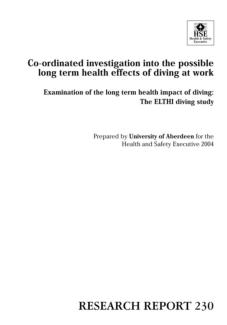Scientific papers 2004





Introduction:
Our decompression tradition is based on the principles set
by Haldane in 1908 (1). The classic or “Haldanian” models
used for the calculation of present tables all have the same
mathematical expression: a) they figure inert gas
exchanges with a series of exponential compartments; b)
they specify the safe ascent criteria as a linear relation
between the ambient pressure and the maximum
permitted compartment tension. As a consequence, these
models have produced similar decompression profiles,
characterized by a initial rapid ascent on a relatively high
distance. However, the drive for table development is
operational pressure. Aside the information circuits,
marginal divers’ communities have empirically developed
original decompression procedures for their needs.
Apparently, all share the same strategy and use slower
rates of ascent and deeper stops than would be predicted
by the Haldanian models.
An attempt is made to introduce new assumptions and
build them into a model to obtain the typical profile of
these successful decompressions.
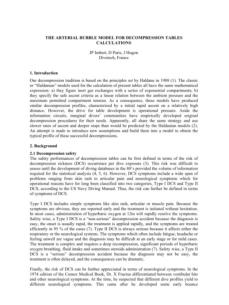


UK HSE reseach report 244. Prepared by Unimed Scientific
Limited for the Health and Safety Executive 2004.
This document is a study of the decompression risks of
saturation diving with particular reference to the risks
which arise from depth changes during the work shifts,
excursions.

This study examined the relationship between thermal
conditions and DCS risk, the production of venous gas
embolism, or inert gas exchange. Also, the authors
conducted a second search for the effects of showering
on DCS and examined the Naval Medical Research
Institute (NMRI) DCS database for cases of DCS
associated with showering. Accepted epidemiological
criteria for the evaluation of causal relationships were
applied to the studies they found on the subject.
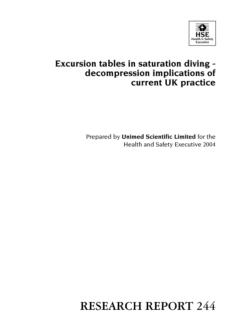
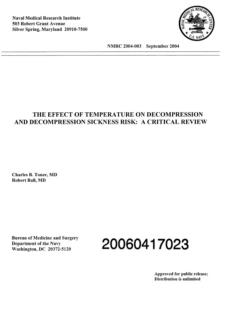

Authors:
Zeljko Dujic, Darko Duplancic , Ivana Marinovic-Terzic,
Darija Bakovc, Vladimir Ivancev, Zoran Valic, Davor
Eterovic, Nadan M Petri, Ulrik Wisløff, and Alf O. Brubakk.
This study is a continuation of previous experiments that
demonstrated that a single bout of high-intensity aerobic
exercise 20 h before a simulated dive reduces bubble
formation and protects rats from decompression sickness.
The present study investigates the importance of these
findings in man.
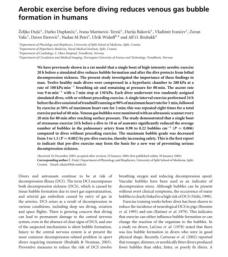

The study's objective was to evaluate the
cardiopulmonary effects of open sea scuba air diving to
39 m (30 minutes bottom time) with standard
decompression. The variables were measured in different
post-dive body postures and compared with the baseline
values before the dive in the same posture to account for
possible gravity-dependent effects of venous gas bubbles.
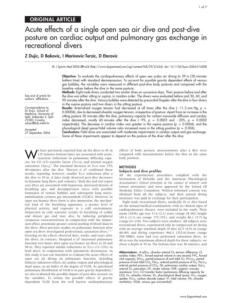

Authors:
H. D. Van Liew & E. T. Flynn
The authors used a graphical approach to compare
prescriptions for ascent given by various air
decompression tables with outcomes of experimental
dives compiled in the U.S. Navy Decompression Database.

Unimed Scientific Limited USL) has carried out a study of
yo-yo diving at the request of the UK Health and Safety
Executive. Yo-yo diving is defined as a series of dives with
short periods spent at depth alternating with similar
periods on the surface. In general, the total duration of
the series is within the time constraints for a single dive to
the same depth for the maximum time allowed without
incurring decompression stops.
.
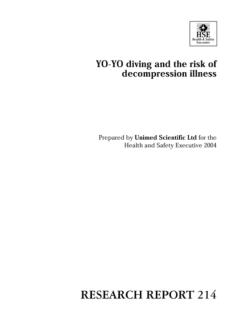

Authors: M. Marczak, & M. Pokorski
The authors investigated the ventilatory response to
normobaric poikilocapnic hyperoxia in healthy subjects.
The study was carried out in 26 subjects aged 26years,
who breathed pure oxygen through a two-way valve for
10 min. Ventilatory flow was recorded using a
pneumotachograph and minute ventilation was
calculated from the tidal and frequency components.
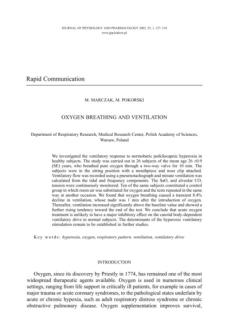
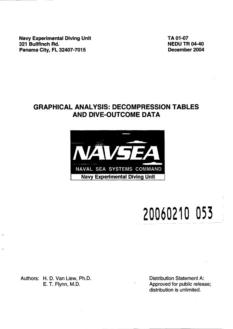

Authors:
A. Marroni , P. B. bennett, F. J. Cronje, R. Cali-Corleo, P.
Germompre , M. Pieri, C. Bonucelli, C. Balestra
This document describes experiments undertaken to verify
the hypothesis that a deep stop would significantly reduce
fast tissue bubble formation and neurological DCS risk. A
total of 181 dives were made to 82 fsw (25 m) by 22
volunteers. The conclusion was that a deep stop
significantly reduced Doppler-detected bubbles and tissue
gas tensions in the 5 and 10 min tissues, which has
implications for reducing the incidence of neurological
DCS in divers.
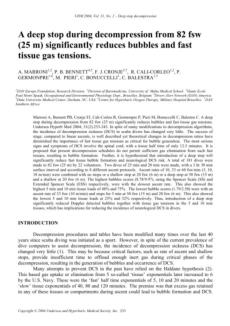

Author: N Bitterman
This document, published in 2015, briefly presents the
knowledge about CNS oxygen toxicity: the clinical
manifestations, descriptions, incidence of symptoms, and
the time duration relationship that defines the safety limits
and risk factors leading to enhanced toxicity to hyperbaric
oxygen. A general outline presents suggested
mechanisms underlying hyperoxia-induced seizures and
strategies for protection against the attacks.
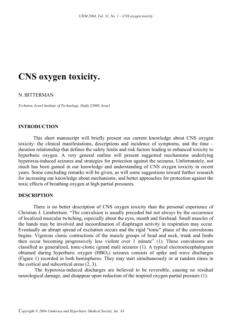

Author: Barbara Shykoff
This document describes experimental four-hour resting
dives while breathing 100% O2 underwater at a
partial pressure of 1.35 atm performed by the US
Navy. Its conclusion is that although even single
four-hour dives at PO2 = 1.35 atm entail some risk
of pulmonary injury, repeated dives with surface
intervals of 20 hours for up to five days do not
appear to be more damaging.
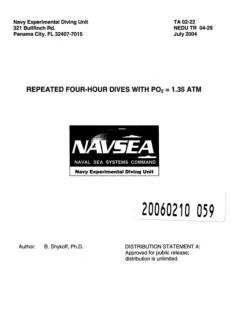

Authors: (R.D Vann, W.A Gerth, P.J Denoble, C.F Pieper, &
E.D Thalmann
The authors conducted experimental trials of flying after
diving using profiles near the no-decompression
exposure limits for recreational diving. The objective was
to determine the dependence of DCS occurrence during
or after flight on the length of the pre-flight surface
intervals (PFSI).
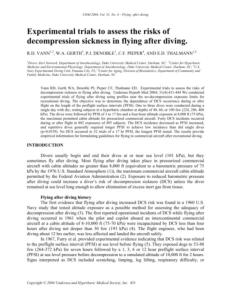

The Brooklyn bridge design was made by John Augustus
Roebling, an architect with a relatively modest experience
in suspended bridge construction. He died few days after
the beginning of the construction work, after stepping on
a cable round and contacting tetanus.
His son, Washington Augustus Roebling, took over the
project management. Unfortunately, as a fire started in the
deepest caisson wooden structure, he spent more than
12 hours at 30 m in the caisson trying to fight the fire and
decompressed without any stop. As he became crippled,
he was forced to stay at his office. He kept controlling the
work with his binoculars while his wife Emily helped him
communicating with the workers. When the bridge was
inaugurated in 1883, Phineas Barnum demonstrated his
strength by crossing the river with the 21 elephants of his
circus.
Very large caissons were employed in the construction of
the Brooklyn Bridge, one of them being sunk to a
maximum depth of 30 m. The working conditions were
dramatic and there were at least 27 fatalities. There was
neither knowledge nor understanding of the
decompression process. Although 110 cases of serious
decompression illness were recorded by the attending
physician, recompression was not used for treatment. It
was on the Brooklyn Bridge project that the word “bends”
was coined for decompression illness. A stilted way of
walking affected by fashionable ladies of the time was
termed “the Grecian Bend”. When the caisson workers
showed signs of decompression illness, their painful
attitude suggested the Grecian Bend. The term was
shortened to “doing the bend” and finally “bends” or
“bent” became legitimized by use.

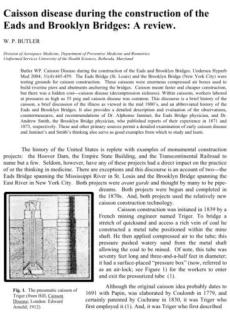

Authors:
K. Kohshi, R. M. Wong, H. Abe, T. Katoh, T. Okudera, Y,
Mano
Four professional Japanese breath hold divers (Ama) with
histories of diving accidents were reported.
Magnetic resonance imaging of these divers detected
cerebral infarcts localized in the watershed areas of the
brain. A survey conducted on their island revealed that
many Ama divers had experienced stroke-like events. A
clinical feature of DCI in breath hold diving is that the
damage is limited to the brain. Although the mechanisms
of brain damage in BH diving are unclear, N2 bubbles
passing through the lungs or the heart so as to become
arterialized are most likely to be the etiological factor.
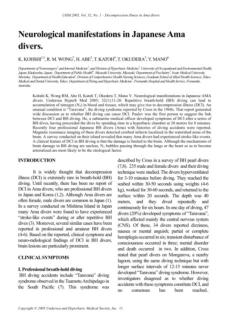

Click on the
octopus to return
to the top of the
page





Authors:
C.M. Maresh, C.L. Gabaree-Boulant, L. E. Armstrong, D.A.
Judelson, J.R. Hoffman, J.W. Castellani, R.W. Kenefick,
M.F. Bergeron, and D. J. Casa
The authors of this document investigate the impact of
pre-exercise dehydration on thirst and drinking behavior
during exercise in heat-stress conditions. They conclude
that pre-exercise dehydration increases thirst-driven
drinking during exercise in the heat but results in similar
fluid regulatory hormonal responses and plasma volume
changes regardless of initial hydration status.
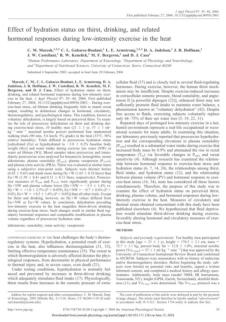

Authors:
Ulrik Wisløff, Russell S. Richardson, and Alf O. Brubakk
This paper discusses the effects of nitrogen bubbles
forming in the blood when divers ascend too quickly,
which can lead to decompression sickness (DCS), with
symptoms ranging from skin rashes to death. Research
has shown that exercising 20 hours before a dive can
prevent bubble formation and protect against severe DCS
in rats. Additionally, administering a nitric oxide (NO)-
releasing agent either chronically or acutely before a dive
also reduces bubble formation and prevents death.
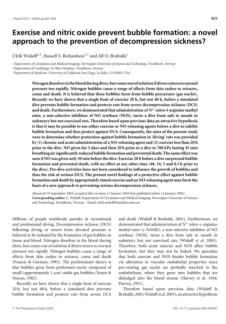

Authors: Jane D. McNeilly, Mathew R. Heal, Iain J.
Beverland, Alan Howe, Mark D. Gibson, Leon R.
Hibbs, William MacNee, & Ken Donaldson
Epidemiological studies have shown that welders exposed
to high concentrations of metal-enriched welding fumes
have a higher incidence of respiratory illnesses such as
bronchitis, metal fume fever (MFF), and chronic
pneumonitis. This study investigated the molecular
toxicology of three metal-rich welding fumes: NIMROD
182, NIMROD c276, and COBSTEL 6. The findings suggest
that soluble transition metal components mediate the pro-
inflammatory responses to welding fumes through
oxidative stress mechanisms.
.
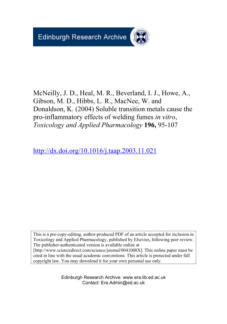

Authors:
R. Arieli, O. Ertracht, I. Oster, A. Vitenstein, and Y. Adir
This study investigates the contentious issue of the impact
of inert gases, specifically nitrogen and helium, on the risk
of central nervous system (CNS) oxygen toxicity.
Researchers examined the latency of the first electrical
discharge (FED) in the electroencephalography (EEG) of
rats exposed to varying nitrogen, helium, and oxygen
pressures. Results showed that nitrogen's effect on latency
was inconsistent among rats, with some experiencing
prolonged latency at certain pressures, while helium
consistently reduced latency.
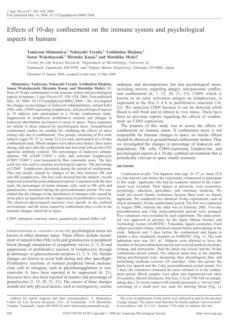

Authors: Tamiyasu Shimamiya, Nobuyuki Terada,
Yoshimitsu Hiejima, Sonoe Wakabayashi,
Hirotake Kasai, and Motohiko Mohri
The authors of this study examined the effects of a 10-day
confinement on leukocyte subpopulations, NK cells,
CD69-expressing lymphocytes, and psychological aspects
in 10 male subjects aged 20–27, divided into two groups.
They used blood sampling and psychological assessments
conducted before, during, and after confinement. They
concluded that stress from confinement affects immune
cell distribution and suppresses lymphocyte proliferative
reactivity.
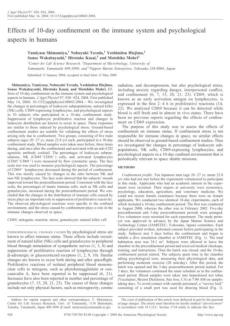

Authors: Stephen J. Cringle and Dao-Yi Yu
This study aimed to assess the retina and choroid's ability
in the rabbit retina's avascular region to regulate
intraretinal oxygen levels during acute systemic hyperoxia.
Researchers used oxygen-sensitive microelectrodes to
measure oxygen tension across the retina and choroid in
anesthetized rabbits before and after incremental
increases in inspired oxygen levels. The findings revealed
that, unlike other mammals, rabbits lack regulatory
mechanisms to control intraretinal oxygen levels during
acute systemic hyperoxia.
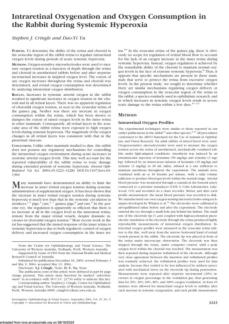

Authors:
Ursula G. Kyle, Ingvar Bosaeus, Antonio D. De Lorenzo,
Paul Deurenberg, Marinos Elia, Jose Manuel Gomez, Berit
Lilienthal Heitmann, Luisa Kent-Smith, Jean-Claude
Melchior, Matthias Pirlich, Hermann Scharfetter, , Annemie
M.W.J. Schols, Claude Pichard
Bioelectrical impedance analysis (BIA) assesses fat-free
mass (FFM), total body water (TBW), and areas of stress.
However, the authors consider that it lacks standardized
methods and quality control. They highlight its
effectiveness with appropriate equations and procedures,
especially in subjects without significant fluid and
electrolyte abnormalities. Therefore, they propose
validated BIA equations and rank them by their standard
error of the estimate.
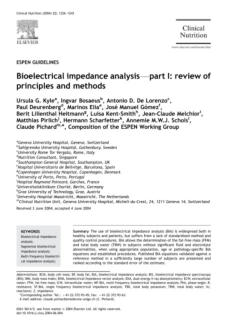

Authors: SM Smith, JE Davis-Street, JV Fesperman, MD
Smith, BL Rice, SR Zwart
A clinical nutritional assessment was conducted on the
NASA Extreme Environment Mission Operation V
(NEEMO) crew before, during, and after a 14-day
saturation dive to study physiological changes related to
space travel. The observed physiological changes
included decreased serum hemoglobin and hematocrit,
increased serum ferritin and ceruloplasmin, and decreased
transferrin receptors. Additionally, there was evidence of
increased oxidative damage and stress, and subjects
experienced decreased energy intake and weight loss.


Authors: A.L Gill & C.N.A. Bell
This review, published in 2004, aimed to clarify HBO and
its potential patient benefits based on the Undersea and
Hyperbaric Medical Society (UHMS), which defines HBO
as a patient breathing 100% oxygen in a pressurized
chamber exceeding sea level pressure (1 atmosphere
absolute, ATA). The review included information from the
UHMS committee report and Medline searches, covering
the history, physiology, current indications, and effects of
HBO therapy.
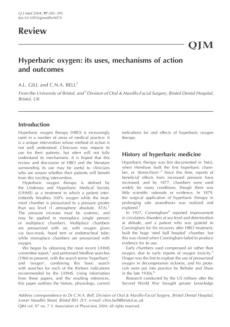

Authors: Makoto Ikeda , Kazohiko Nakabayashi ,
Masaharu Shinkai , Yukihiko Hara, Takako Kizaki,
Shujiho Huji Oh-Ishi, and Hideki Ohno
There are conflicting views regarding the impact of deep
saturation dives on liver function in divers. Consequently, a
study was conducted to reevaluate whether a deep
saturation dive (400 msw) causes liver disturbances. The
results confirmed liver dysfunction, likely due to oxidative
stress. The effects of antioxidant supplementation were
examined and appeared to prevent liver disturbances.
Therefore, the authors recommend that divers involved in
such operations take antioxidant supplements.
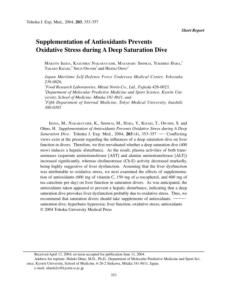

Authors:
Ursula G. Kyle, Ingvar Bosaeus, Antonio D. De Lorenzo,
Paul Deurenberg, Marinos Elia, Jose Manuel Gomez, Berit
Lilienthal Heitmann, Luisa Kent-Smith, Jean-Claude
Melchior, Matthias Pirlich, Hermann Scharfetter, , Annemie
M.W.J. Schols, Claude Pichard
Part II of the ESPEN guidelines reviews data on fat-free
mass (FFM), body fat (BF), body cell mass (BCM), total
body water (TBW), extracellular water (ECW), and
intracellular water (ICW) from various studies involving
both healthy and ill individuals. The findings indicate that
BIA is effective for healthy subjects and patients with
stable water and electrolyte balance when using a
validated BIA equation tailored to age, sex, and race.
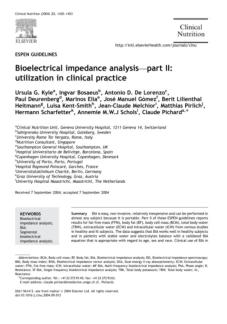

Authors:
Anatoly A. Starkov, Gary Fiskum, Christos Chinopoulos,
Beverly J. Lorenzo, Susan E. Browne, Mulchand S. Patel,
and M. Flint Beal
Reactive oxygen species (ROS) produced by mitochondria
are associated with cell death in various diseases. The
specific sites of mitochondrial ROS production are not
well-defined but are generally believed to be in the
electron transport chain. This study measured hydrogen
peroxide (H2O2) production, respiration, and
Nicotinamide Adenine Dinucleotide Phosphate (NADPH)
reduction in rat brain mitochondria using different
respiratory substrates.
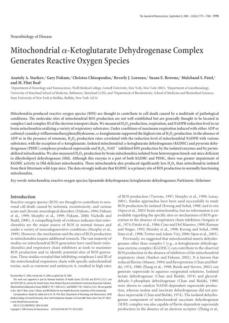

Authors: Jacek Kot, Zdzislaw Sicko
This document provides an overview of the current
treatment protocols for divers suffering from bubble-
related illnesses, such as decompression sickness. It
discusses the standard procedures before recompression,
including normobaric oxygenation, fluid administration,
and patient stabilization, highlighting the potential use of
various pharmacological agents. However, it notes the
lack of solid evidence from randomized controlled studies
regarding their efficacy. Additionally, it references the
recommendations from the Second European Consensus
Conference on Hyperbaric Medicine, suggesting that
these guidelines remain relevant.
.
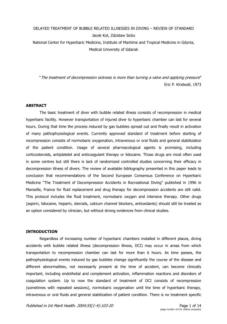

Authors: Marco Ferrari, Leonardo Mottola, and Valentina
Quaresima
This document reviews and summarizes recent literature
on using near-infrared spectroscopy (NIRS) in exercise
physiology and neuroscience. It explains the principles,
techniques, advantages, limitations, and applications of
NIRS and describes the instrumentation and measurable
parameters associated with this noninvasive technique. It
also highlights the capabilities of NIRS in measuring tissue
oxygen saturation and hemoglobin volume changes and
indirectly assessing brain/muscle blood flow and oxygen
consumption.
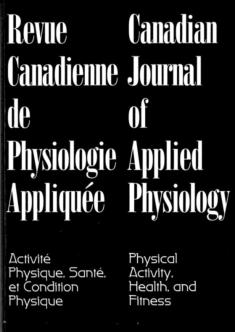



6 - Risk of decompression illness among 230 divers in relation to the
presence and size of patent foramen ovale.

Authors: Sandra Rea Torti, Michael Billinger, Markus
Schwerzmann, Rolf Vogel, Rainer Zbinden,
Stephan Windecker, Christian Seiler
The risk of developing decompression illness (DCI) in
divers with a patent foramen ovale (PFO) has not been
directly determined so far; neither has it been assessed in
relation to the PFO’s size.
In 230 scuba divers (age 39 ± 8 years), contrast
transoesophageal echocardiography (TEE) was
performed for the detection and size grading (0–3) of
PFO. Prior to TEE, the study individuals answered a
detailed questionnaire about their health status and about
their diving habits and accidents. For inclusion into the
study, P200 dives and strict adherence to decompression
tables were required.
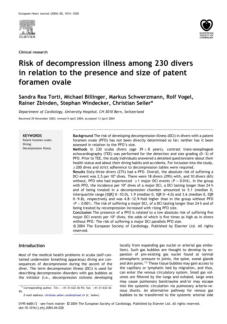

Publisher: UK HSE
The authors studied self-reported health and quality of life
in 1,540 divers and 1,035 offshore industrial workers using
a questionnaire, and validated the responses with clinic
assessments of 10% from each group. Both groups had
similar health-related quality of life. However, industrial
accidents mainly affected workers' quality of life. Eighteen
percent of divers reported 'forgetfulness or loss of
concentration,' linked to their dive experience, which
lowered their quality of life. A sample showed lower
cognitive function and structural changes on Magnetic
Resonance Imaging (MRI). Welding worsened symptoms
for divers, and there was a high prevalence of hearing
disorders in both groups.


14 - Co-ordinated investigation into the possible long term health
effects of diving at work Examination of the long term health
impact of diving: The ELTHI diving study - Research report 230
